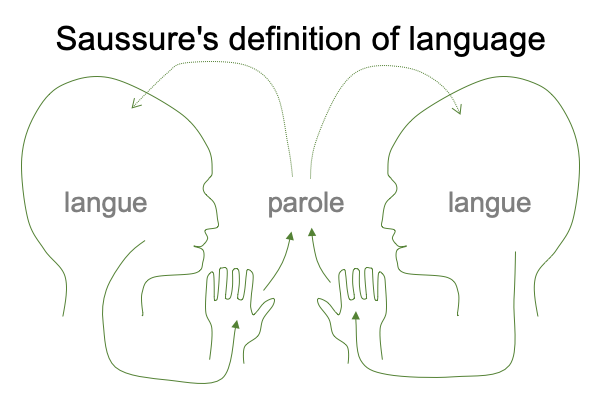0322 Notably, the prior blog’s semiotic picture of hominin communication testifies to Saussure’s definition of language as two related systems of differences, “parole” and “langue”. In hand talk, the relation is motivated, because hand-talk manifests icons and indexes. In speech-alone talk, the relation is arbitrary, because speech-alone talk is purely symbolic. Spoken words cannot picture or point to anything.
Here is a picture for hominin hand-talk.

0323 What is wrong with this picture?
Where is the adaptation of joint attention2a and all that it entails?
Like a bad movie, a crucial element is left on the cutting room floor.
0324 Tomasello identifies some of the consequences of hominin hand-talk.
0325 To start, the motive to inform must be true. Hand-talk gestures request, inform and share without falsehood or deception. “Accurate” and “honest” are not ideated as virtues in hand-talk, because the referents of these explicit abstractions cannot be pictured or pointed to. “Accurate” and “honest” cannot be named. But, surely hominins recognize accuracy and honesty.
Next, the gesture-word must be timely. It must be relevant. Eye-contact may be necessary. The sclera of the eye for humans is white, allowing for easy determination of the direction of gaze. The palms of the hands lack pigment, enhancing visibility.
Yes, intuitions about timely, relevant word-gestures are built into the hominin body.
0326 Next, proto-language offers clues that assist in decoding an interventional sign-object (SOi) into a specifying sign-vehicle (SVs). For example, precursor gestures may differentiate intents to request, inform and share. Special gestures may mark time, distance, or direction with respect to the sun. These clues will later be incorporated into a fully grammatical hand-talk.
Next, manual-brachial gestures within each team become more and more distinct, depending on the routinization of the team activities over time. As habitual voluntary manual-brachial gestures become more distinct over generations, the proto-language of each team approaches Saussure’s definition of language. A closed and finite system of differences may also be called a symbolic order. Symbolic operations may evolve. Today, we call these symbolic operations, “grammar”.
0327 Let me say that again.
First, hand-talk evolves in the milieu of teams in the Era of Joint Intentionality. Hand-talk is accurate, honest, timely and relevant. The specifying sign-vehicle (SVs) yields a sensible sign-object (SOs).
Second, the specifying sign flourishes when reference is guaranteed by the iconic and indexal sign-qualities of hand-talk.
Third, each team’s hand-talk system of differences slowly becomes more and more linguistic as word-gestures become more and more distinct. Grammar exploits the emergence of a symbolic order (that is, a system of differences). Grammar consists in symbolic operations among gestural-words.
0328 So concludes my examination the era of joint intentionality.
